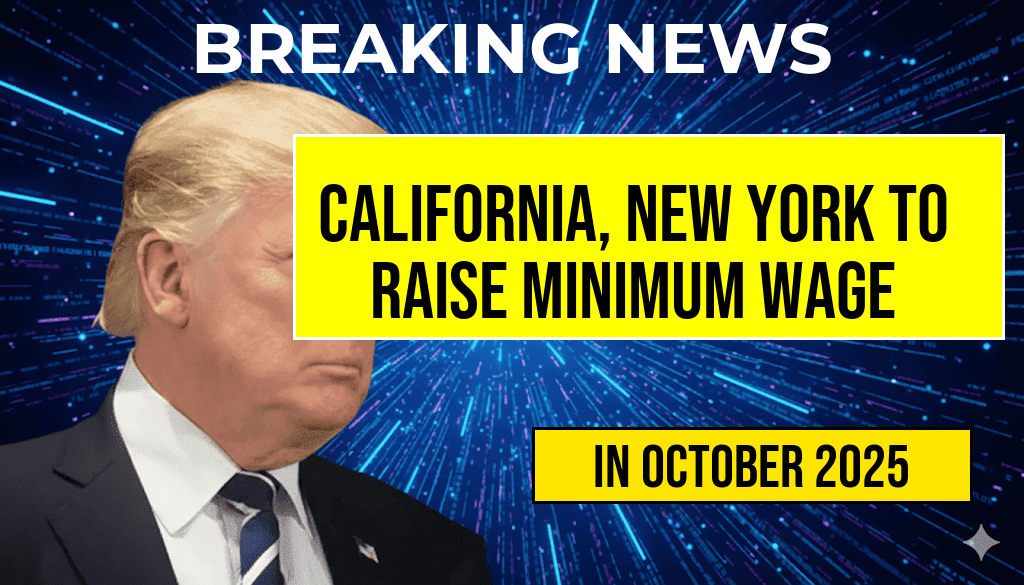California and New York are set to implement significant increases to their minimum wages, with both states planning to raise the hourly rate to $16.50. These measures reflect ongoing efforts to address income inequality and improve living standards amid rising living costs. California’s phased approach will see the wage hike take effect for large employers starting in January 2024, while smaller businesses will follow later in the year. New York’s adjustment is scheduled for the upcoming legislative session, aiming to set a new baseline for wages across the state. The moves come amid a national debate over fair compensation, with supporters arguing that higher wages can boost economic stability and reduce poverty, while opponents warn of potential impacts on employment and business costs. The policy shifts are expected to influence labor market dynamics, especially in urban centers where cost-of-living increases have outpaced wage growth in recent years.
California’s Path to $16.50
Legislative Timeline and Implementation
California’s minimum wage legislation, enacted in 2016, established a schedule for incremental increases tied to employer size. The state’s plan to reach a $16.50 hourly wage by January 2024 marks a continuation of this trajectory. Under the current timeline, large employers with 26 or more employees will be required to comply starting January 1, 2024, while smaller businesses will follow on July 1, 2024.
| Year | Employer Size | Minimum Wage |
|---|---|---|
| 2023 | 26+ employees | $15.50 |
| 2024 | 26+ employees | $16.50 |
| 2024 | 25 or fewer employees | $16.50 (effective July 1, 2024) |
Impact on Employers and Workers
Proponents argue that the wage increase will lift thousands of workers out of poverty and stimulate local economies through increased consumer spending. Small business associations, however, express concern about the added financial burden, especially for industries with tight profit margins such as retail and hospitality. According to state labor officials, the increase is designed to be manageable, with many businesses already adjusting their compensation structures in anticipation.
New York’s Legislative Agenda
Upcoming Wages and Policy Goals
New York’s efforts to set a $16.50 minimum wage are part of broader legislative initiatives aimed at reducing economic disparities across the state. The plan, currently under review, intends to phase in the wage increase over the next year, with targeted adjustments in areas with high living costs like New York City, Westchester, and Long Island. The state legislature has prioritized raising wages to support essential workers and promote economic resilience in its urban centers.
Regional Variations and Considerations
While the statewide goal is to reach a $16.50 minimum, regional differences in cost of living mean some areas will see higher wages sooner. For example, New York City’s minimum wage is already above the state minimum, and further adjustments are expected to reflect local economic conditions. The state’s Department of Labor emphasizes its commitment to ensuring wage policies adapt to regional needs, balancing affordability with fair compensation.
Broader Economic Context
National Trends and Comparisons
California and New York’s wage hikes mirror a nationwide movement toward higher minimum wages, with several states and municipalities implementing similar policies in recent years. According to data from the Wikipedia entry on minimum wages in the U.S., 2023 marks a pivotal year as more regions aim for $15 to $20 per hour thresholds. Advocates argue that increased wages can reduce reliance on social safety net programs, while critics warn of potential declines in employment or increased automation.
Economic Impact and Future Outlook
Economic analysts suggest that raising the minimum wage to $16.50 could lead to increased consumer spending, which benefits local businesses and can support job growth. Conversely, some studies highlight concerns about wage compression and potential layoffs in sectors heavily dependent on low-wage labor. Policymakers continue to monitor the effects, emphasizing the importance of complementary measures such as workforce training and support for small businesses.
Resources and Further Reading
Frequently Asked Questions
What is the new minimum wage proposed in California and New York?
The proposed minimum wage in both California and New York is set to increase to $16.50 per hour.
When will the new minimum wage take effect?
The implementation date for the raise to $16.50 is currently being finalized, but it is expected to begin within the upcoming months.
How will the wage increase impact local workers and businesses?
The wage increase aims to boost income levels for workers while presenting both opportunities and challenges for businesses to adapt to higher labor costs.
Are there any exceptions or phased approaches for certain industries or regions?
Yes, some industries or regions may have phased or exempted implementation plans to allow for a smooth transition.
What are the reasons behind the decision to raise the minimum wage to $16.50?
The government cites cost of living increases and economic growth as key reasons for raising the minimum wage to improve living standards for workers.

Leave a Reply